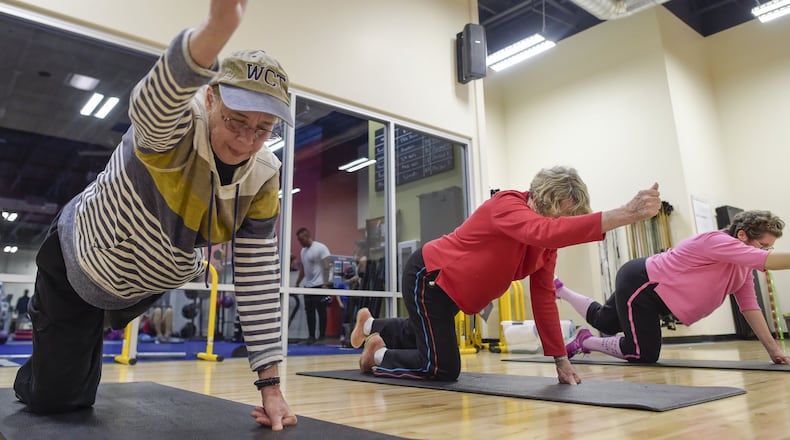“I didn’t want to be a cancer patient my whole life,” Moerschbacher said. “I was weak from drugs and cutting and surgery. I wanted to feel stronger. I wanted to walk my dog.”
The Triumph Cancer Foundation’s exercise program, now offered at California Family Fitness, gives cancer survivors a road back to health and lowers their risk of recurrence.
The group model can help people build confidence when they’re frustrated by their illness-imposed limitations, said Pam Whitehead, a cancer survivor and founder of Triumph. The 90-minute classes lead participants through warmups, machine exercises and meditation, much of it modified to accommodate for the poor balance issues, joint pain and muscle fatigue that cancer survivors struggle with.
“There’s this unknown from the cancer patient after a treatment, because things are not as they were,” Whitehead said. “There’s a fear of injury, there’s a reticence of doing it on their own. The idea of doing a group program is there’s this team aspect, and you feel obligated to attend the classes because everybody roots one another on. There’s a very positive aspect to it physically and emotionally.”
Experts have increased the recommended quantity of exercise for both cancer patients and survivors in recent years, said Mary Pare, a navigator at the Sutter Cancer Center. Physical activity can help with specific post-cancer conditions such as lymphedema, a blockage in the lymphatic system, and nerve damage, usually to the hands and feet.
Exercise can also stave off other cancer side effects such as weight gain and depression, she said.
“People get deconditioned during their treatment,” Pare said. “The less you do do, the less you can do, and it’s kind of a downward spiral. But if you build your strength and endurance and flexibility, you’ll feel better and you can do more and more.”
At the California Family Fitness class, breast cancer survivors Laura Lee and Delora Marran found common ground in how much their bodies had changed during treatment. They lamented their post-cancer figures as they tracked the afternoon’s exercises on an activity chart.
“After surgery and treatment there was so much sitting, I felt like I was up to my feet in mud,” said Lee, who regularly participated in the Bay to Breakers race before her diagnosis.
“I thought I was going to get skinny and frail, but instead I lost my hair and got fat,” Marran said.
The women said they were already starting to feel stronger and healthier but wondered what they’ll do when their classes end.
About the Author
